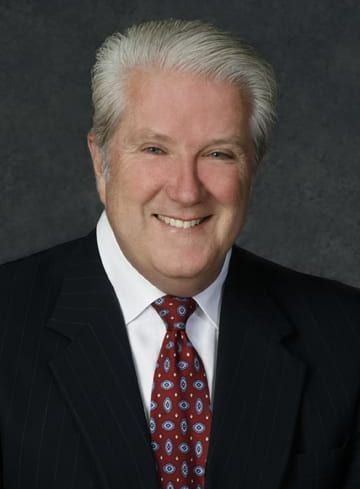JPMorgan’s Al Brooks to America: Calm Down, It’s Not 2008!
The veteran CRE banking chief emphasized it’s not the GFC during a webinar with Commercial Observer
By Brian Pascus June 2, 2023 1:16 pm
reprints
Things are dire in the banking industry right now, which has seen three of the four largest bank failures in U.S. history since March, and it’s not much better in commercial real estate capital markets, which faces a $1.5 trillion wall of maturities due within 18 months.
But don’t tell JPMorgan Chase’s Al Brooks that things are bad — he doesn’t want to hear it.
“It’s not a time for panic, this isn’t ‘08 or ‘09,” said Brooks, the wily industry veteran who serves as managing director and head of JPMorgan Chase Commercial Real Estate. “It’s night and day, and that’s true for all banks.
“Do I think we’re completely through? Is every single banks’ balance sheet constructed the way they want it to be? Probably not, but I also don’t think we’re in a free-fall like we were in 2008, where housing prices on a national basis, for the first time in the country’s history, dropped precipitously and caused problems from community banks to the largest banks,” he added.
And Brooks noted there were “quite a few bright spots” in the market including the possibility of interest rate stabilization and healthy asset classes with increasing rents and cash flow. Multifamily, industrial and neighborhood retail continue to perform well, according to the bank.
Brooks’ optimistic assessment of the financial landscape came during JPMorgan Chase’s “Midyear Outlook Webinar,” where he was joined by Victor Calanog, global head of research and strategy for real estate private markets Manulife Investment Management, and Cathy Cunningham, finance editor and do-deputy editor at Commercial Observer.
Brooks’ passionate defense of market fundamentals came when he shot back at Calanog’s negative evaluation of the economy, which the former Moody’s Analytics chief economist summed up in two words: “Fear and panic.”
“Now that [fear and panic] stems from uncertainty, which has been running higher, particularly since a rising interest rate regime tag-teamed with a Russian-Ukraine military crisis in February 2022, and I’m also not convinced that the effects of the pandemic on the real economy have truly waned,” Calonog said. “But that volatile combination of multiple sources of uncertainty is producing fear.”
Brooks tried to lighten the mood by reminding the panel that there was once a time — approximately 42 years ago, August 1981 — when interest rates were 17 percent and real estate deals still found a way to cross the finish line.
“As old as I am, I do remember underwriting at 17 percent, and we still got deals done,” Brooks said. “So it’s not impossible. You have to have a lot higher cap rates, and it’s a different regime for putting together a deal, but it doesn’t mean they didn’t get done.”
And Brook’s team at JPMorgan hasn’t just been sitting on the sidelines this time around. Last year, his team financed $12 billion to construct or incentivize the preservation of 95,000 affordable housing units along with $300 million worth of New Markets Tax Credits to build health clinics, grocery stores and job-training facilities in low-income communities. He and his partner Vincent Toye, head of community development banking and GSE lending, also deployed $190 million in capital to finance community development financial institutions in underserved communities.
Brooks said that the CRE landscape, while fragile, is nowhere near the level of uncertainty that characterized 2008. His assessment is backed up by evidence. In 2008, 30 banks failed, holding assets of $1.7 trillion; in 2009, 148 banks failed, holding assets of $2.1 trillion; and in 2010, 157 banks failed, holding assets of $92 billion, according to Henkel Analytics.
This year has thus far seen four bank failures — Silvergate Bank, Silicon Valley Bank, Signature Bank, and First Republic Bank — holding total asset valuations beyond $556 billion.
“We’re nowhere near the teetering side, if you will, of 2007 and 2008,” he said.
Brooks noted he knows a thing or two about the Global Financial Crisis having previously worked for Washington Mutual, which held $307 billion in nominal assets upon its failure in 2008, still the largest bank run in U.S. history.
“I did work for a company that put a lot of subprime home loan deals on the balance sheet, and I don’t have anyone doing that right now,” Brooks said. “So it’s a very different market we’re in.”
Brian Pascus can be reached at bpascus@commercialobserver.com


